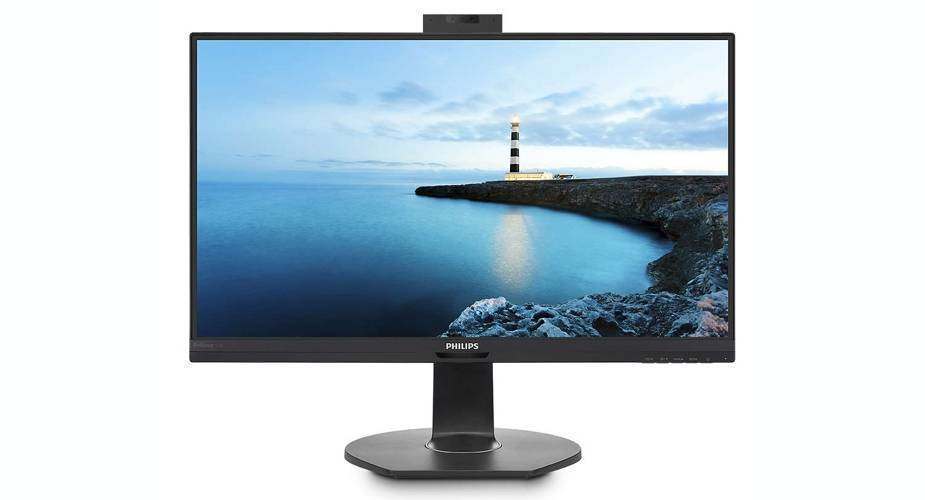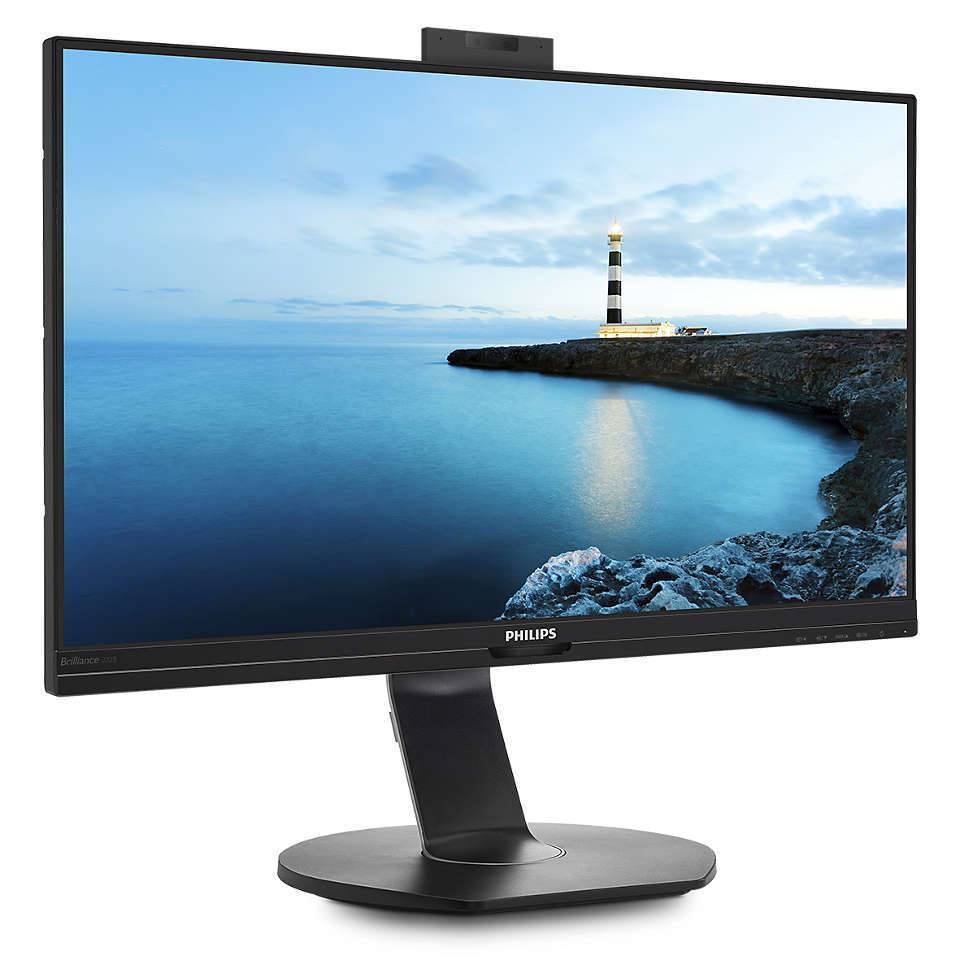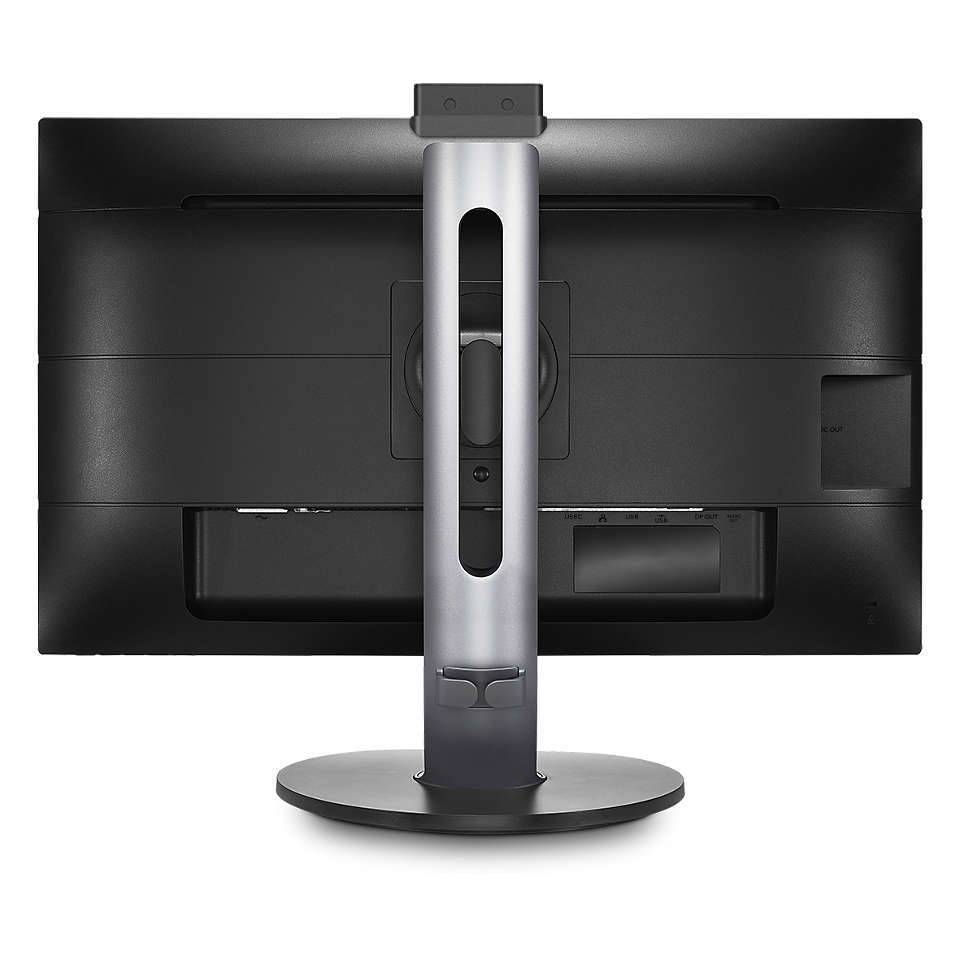Philips Brilliance 272B7QUBHEB
A good office monitor is quite a key issue for many. It's not just about browsing the web or working in a text editor or spreadsheet, although in both cases it's also a big deal. A good office monitor is also a key issue for programmers who spend hours staring at lines of code written in one language or another. For me, who does both, it is of great importance. It is also important that such a monitor can be easily placed on your desk according to your needs and that it offers something more than just displaying an image. For the last few months my desk horse was a Philips Brilliance 272B QUB monitor.

I have already written about Philips monitors many times on my blog. I appreciate them for their image quality, stable and durable construction and additional equipment. It is no different for this particular model. However, it has both advantages and disadvantages. About both of them I write below.

Construction and stand.
Philips never took the easy way out of my mind. Monitors of this brand always look good and are made of strong plastic. The 27-inch Brilliance 272B QUB model has a case made of matt black plastic and a black-silver foot (below). On the back of the monitor there is a panel of sockets, facing down, which is also quite typical for Philips, but unfortunately not very comfortable. On one side, the cables do not protrude back and do not take up additional space. On the other hand, however, connecting anything is tiring in the long run - and there is something to connect, as the monitor is equipped with a USB-C hub. On the back wall at the left edge (looking from the front) there is a socket to power another device.

Half the length of the upper edge of the case, i.e. on its vertical axis, is hidden the Windows Hello pull-out camera. You just need to press it to slide it out on its own. It is hidden in a similar way. Here, however, each time the pressure on the camera module during hiding caused the monitor to lower. With frequent use of this element it can be annoying.
There are five buttons at the right end of the bottom edge, four of which allow you to adjust various parameters of the monitor and navigate through its settings menu, and one of which serves as a switch. The menu is similar to that of other Philips monitors and you can get used to navigating through it with these buttons quite quickly.
The monitor is of course based on a powerful leg. Those from Philips could successfully compete with the Apple footer, which costs more than the whole monitor. I have tested a lot of monitors and so far I have found nothing better. The Philips leg allows you to adjust the height of the monitor between 0 - 150 mm, rotate it 175°, tilt it between 5 - 30° and rotate it vertically. It is also very easy to install. The right leg rests on a wide, almost round foot and is screwed on with a screw equipped with a handle, so you do not need to use a screwdriver. The leg is connected to the monitor with a latch. The monitor on such a leg is simply placed on the desk and can be freely positioned as needed. The leg is also equipped with a special hook to keep the cables in one place.
Screen
As its name suggests, this monitor has a screen size of 27 inches, a resolution of 2560 x 1140 (QHD) and a maximum refresh rate of 75 Hz. The display is bright (up to 350 nits) and very good quality (as for QHD of course). The colors are vivid and their range is wide, at least for my eye - of course it is worth checking them yourself, before buying. Philips reports that this screen has 132% sRGB coverage and declares its response time of 5 ms - remember that this is a product designed for the office. The monitor offers quite wide viewing angles (178° horizontally and vertically), so you can set it up quite without the fear that looking at the sides of the display colors will be distorted. With very bright, uniform backgrounds, e.g. white, you can see a slight difference in brightness - at the edges of the screen the image is slightly darker.
Add-ons (ports, USB-C hub, camera)
This monitor offers much more than just a good image. It is equipped with quite a large set of ports. And so you can connect it to your computer via HDMI and Display Port. What is interesting, it also offers Display Port output, allowing for serial connection of an additional monitor (but I have not tested this solution).
It is also equipped with a USB-C socket, which at least in theory should accept video signal. This is indicated, among others, by the choice of sources. The USB-C port also allows you to conveniently charge your MacBook Pro from the monitor and use the monitor as a hub. There are four USB type A ports available to which you can connect e.g. additional drives permanently - one of the ports supports fast charging, but I would advise you to connect the cable to it permanently because of the uncomfortable in my opinion (and commonly used by Philips) way of placing sockets facing down (I mentioned it above). There is also a network port, which allows you to connect to the network over the cable. The hub works very well and the monitor charges my MacBook Pro. It's just a pity that I can't limit myself to just one cable and have to use two.
I have already mentioned the retractable camera, which extends from the top edge. It is a powerful Windows Hello compatible module, which is also a face scanner. Windows Hello works on similar principle as Face ID. Unfortunately this camera will not be useful for Mac users. Despite attempts I could not force it to work with my MacBook Pro. However, it will certainly be useful for users working on Windows computers.
Philips Brilliance 272B7QUBHEB is also equipped with a sensor that will detect your presence in front of this monitor. If the user is absent from the screen for a longer period of time, the monitor will turn off automatically. Don't worry - during a few months of using it, it never turned off by itself.
Summary
Philips Brilliance 272B7QUBHEB provides very good image quality and a rich set of ports, allowing you to connect drives, additional monitor, network cable without having to resort to bulky and space-saving adapters.
Mac users will also not benefit from the Windows Hello face recognition module. By the way, it's nice as if Apple has introduced Face ID in Macs with support for solutions such as this in the described Philips monitor.
Photos: Philips